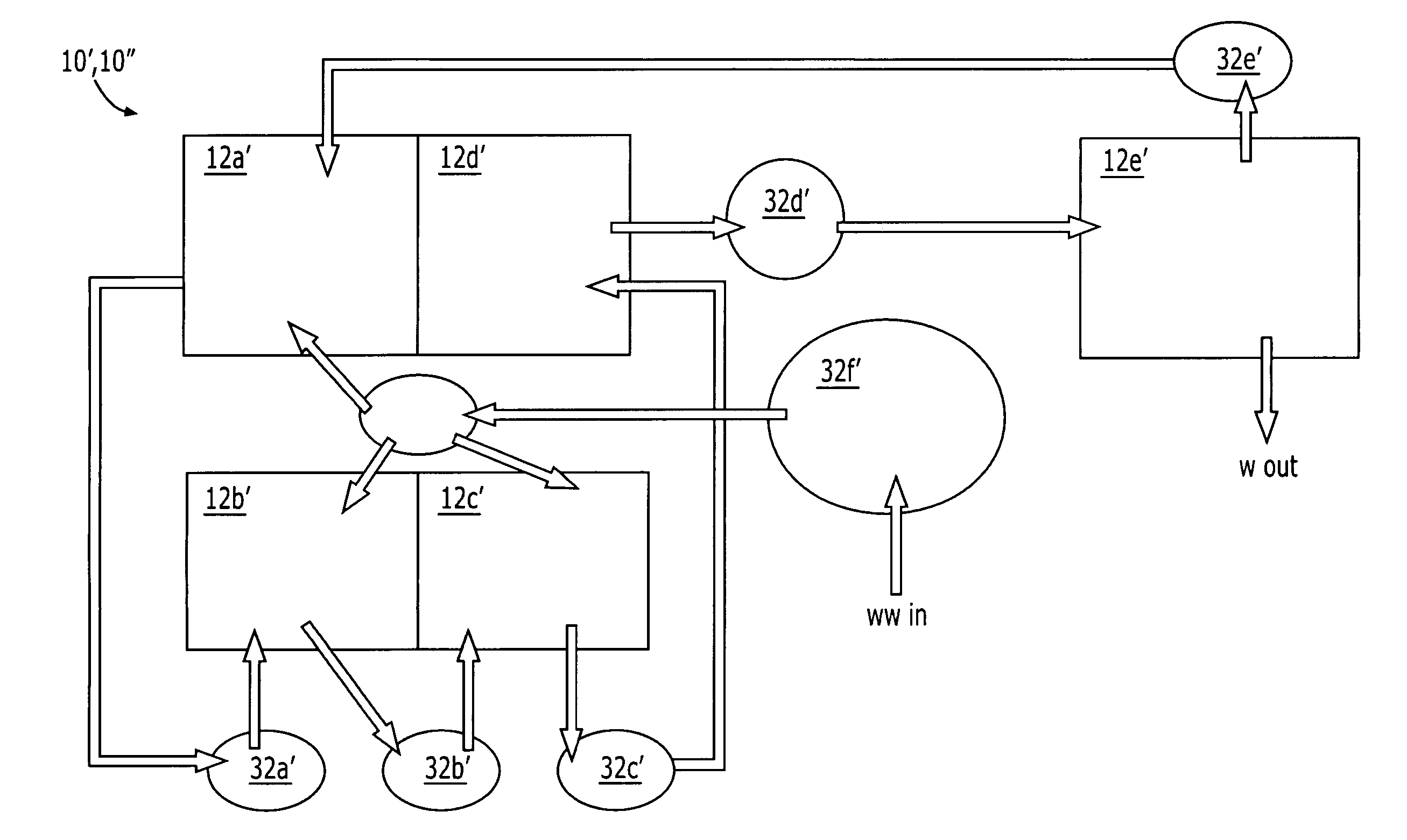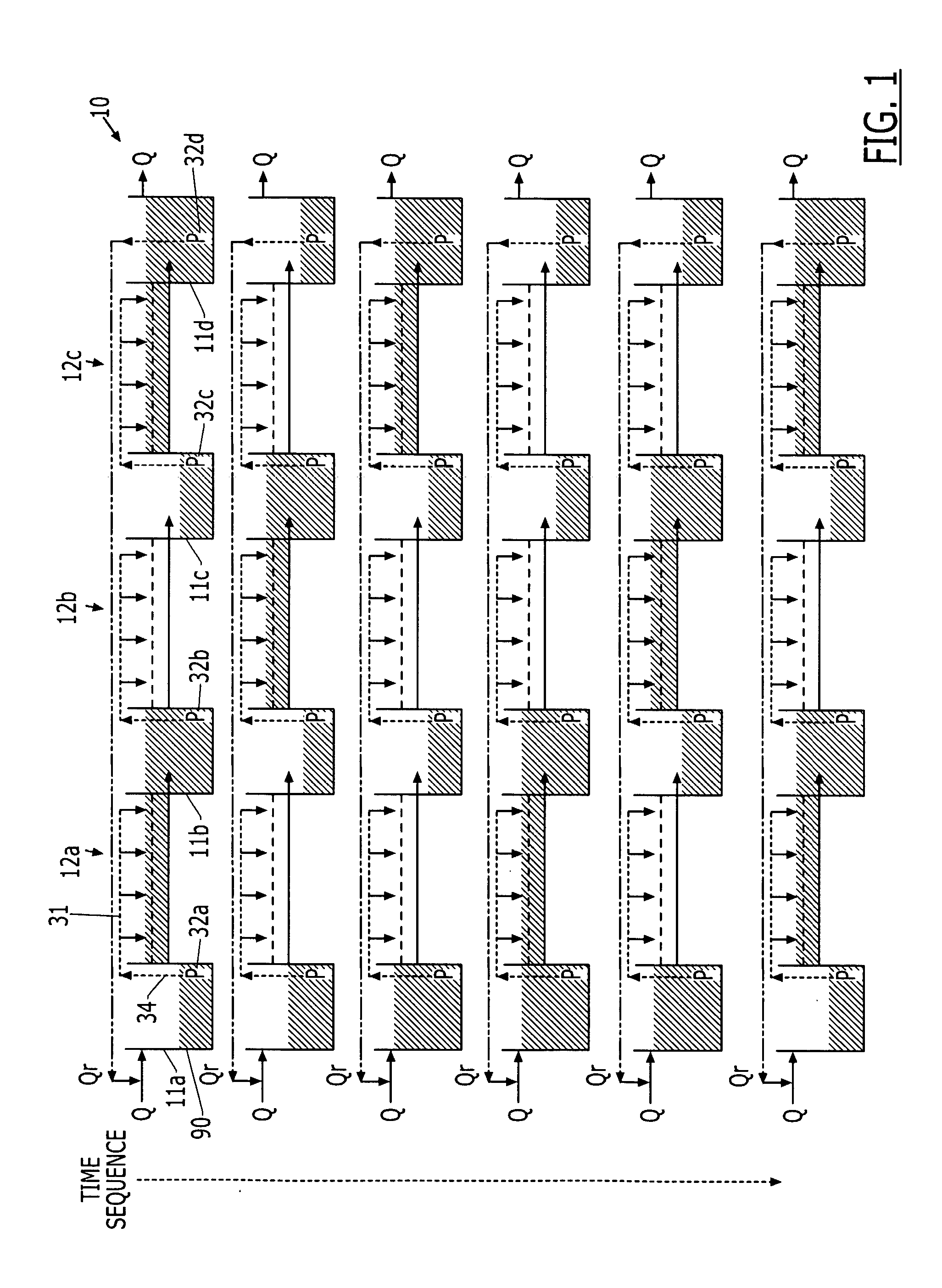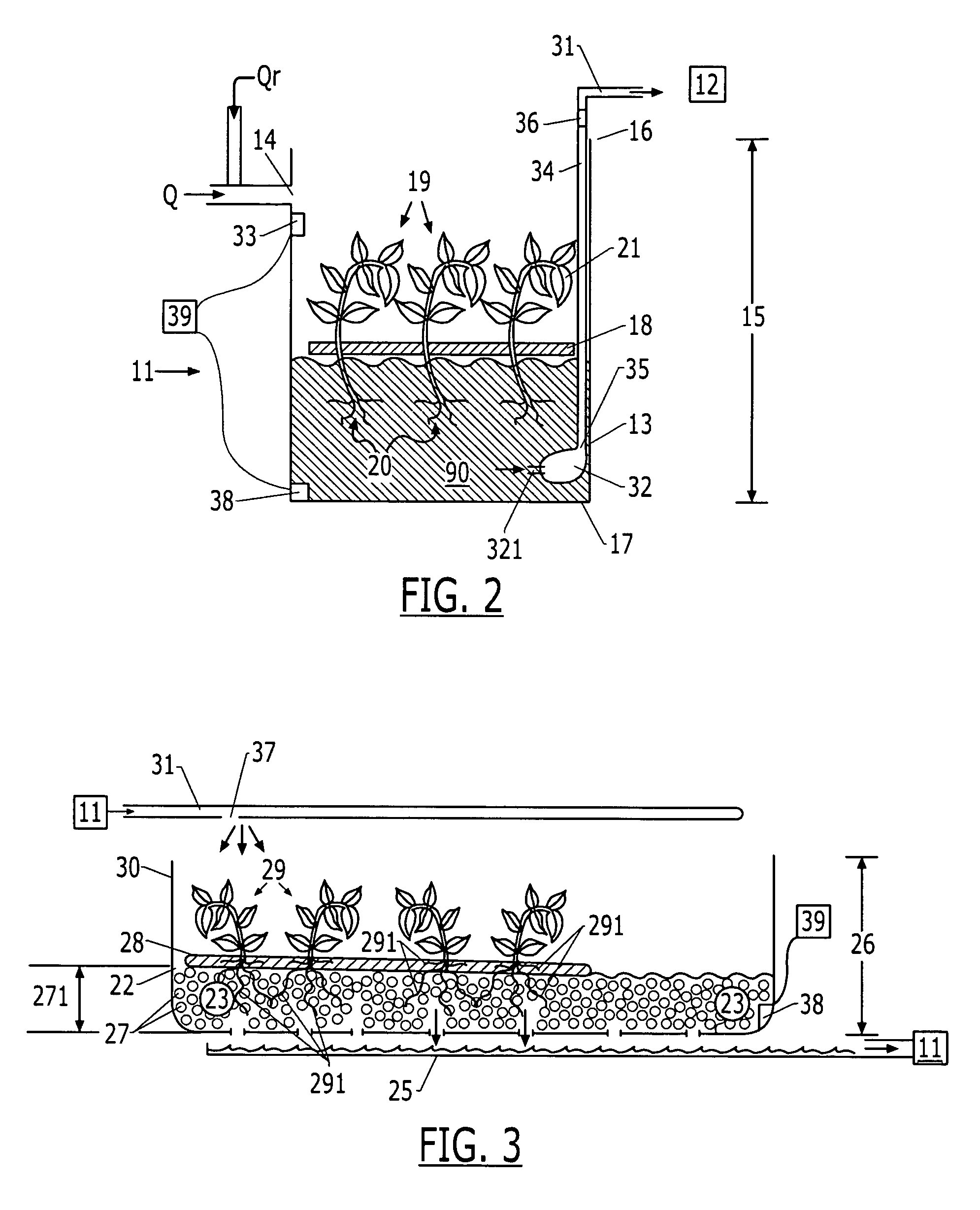Tidal vertical flow wastewater treatment system and method
a wastewater treatment system and vertical flow technology, applied in water cleaning, filtration separation, separation processes, etc., can solve the problems of inability to achieve advanced treatment, large land footprint, poor denitrification performance of tide flow systems, etc., to achieve advanced simultaneous nitrification and denitrification, reduce the treatment footprint, and reduce the effect of energy consumption
- Summary
- Abstract
- Description
- Claims
- Application Information
AI Technical Summary
Benefits of technology
Problems solved by technology
Method used
Image
Examples
Embodiment Construction
[0046] A description of the preferred embodiments of the present invention will now be presented with reference to FIGS. 1-13.
System Elements
[0047] The integrated TVFM treatment system 10 in a particular embodiment comprises an alternating series of lagoons 11 and VF marsh cells 12, for example, marsh cells 12a-12c and lagoons 11a-11d, alternating as shown in FIG. 1. Q represents forward flow; Qr, recycle flow. The overflow piping between marsh cells 12a-12c and lagoons 11a-11d is not depicted. The dashed horizontal line in the marsh cells 12a-12c represents the media / plant root surface. The overall hydraulic regime in the system 10 involves fill and drain cycles where wastewater is alternately pumped and flows between cells 12 and lagoons 11. The tidal vertical flux of water in and out of the marsh cells 12a-12c is designed to cycle over a predetermined period of, for example, at least once per day.
[0048] Means for transporting water between the lagoons 11a-11c and marsh cells ...
PUM
| Property | Measurement | Unit |
|---|---|---|
| concentrations | aaaaa | aaaaa |
| concentration | aaaaa | aaaaa |
| diameter | aaaaa | aaaaa |
Abstract
Description
Claims
Application Information
 Login to View More
Login to View More - R&D
- Intellectual Property
- Life Sciences
- Materials
- Tech Scout
- Unparalleled Data Quality
- Higher Quality Content
- 60% Fewer Hallucinations
Browse by: Latest US Patents, China's latest patents, Technical Efficacy Thesaurus, Application Domain, Technology Topic, Popular Technical Reports.
© 2025 PatSnap. All rights reserved.Legal|Privacy policy|Modern Slavery Act Transparency Statement|Sitemap|About US| Contact US: help@patsnap.com



